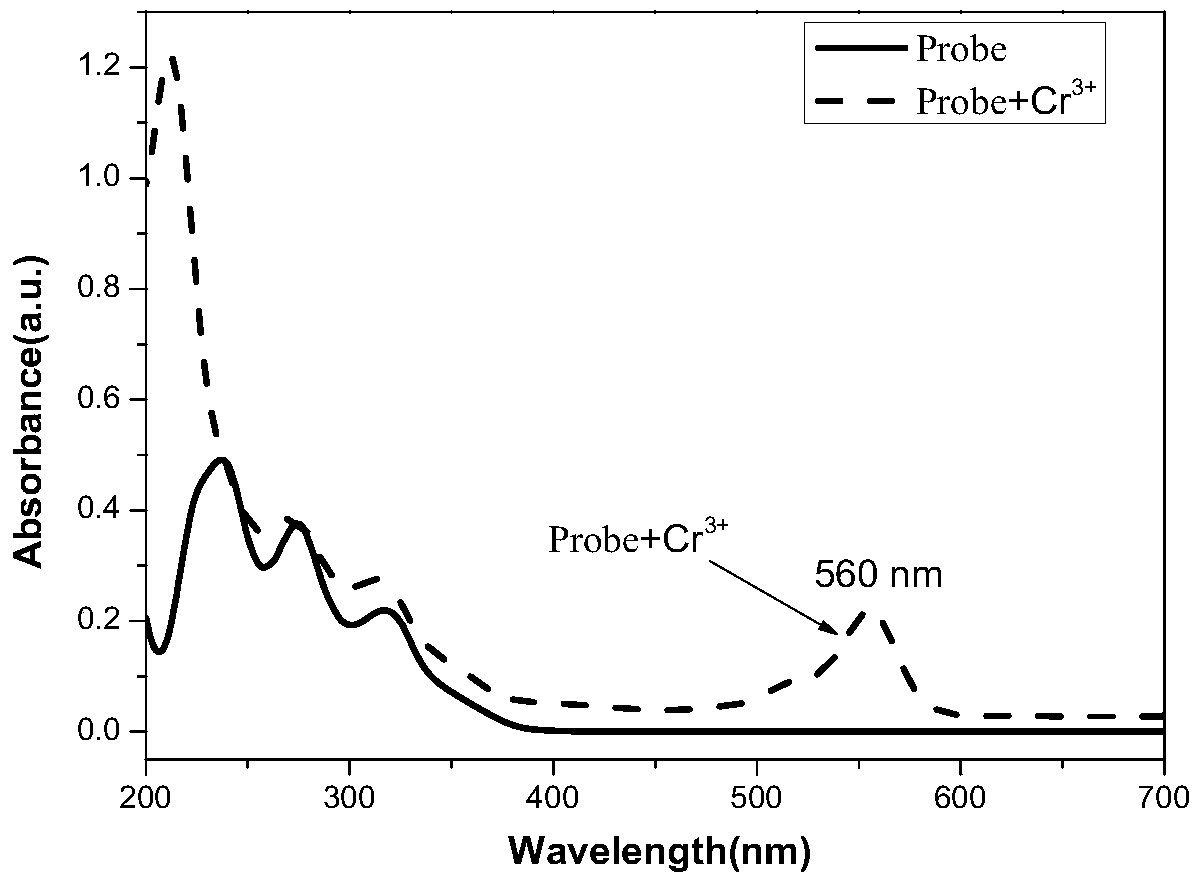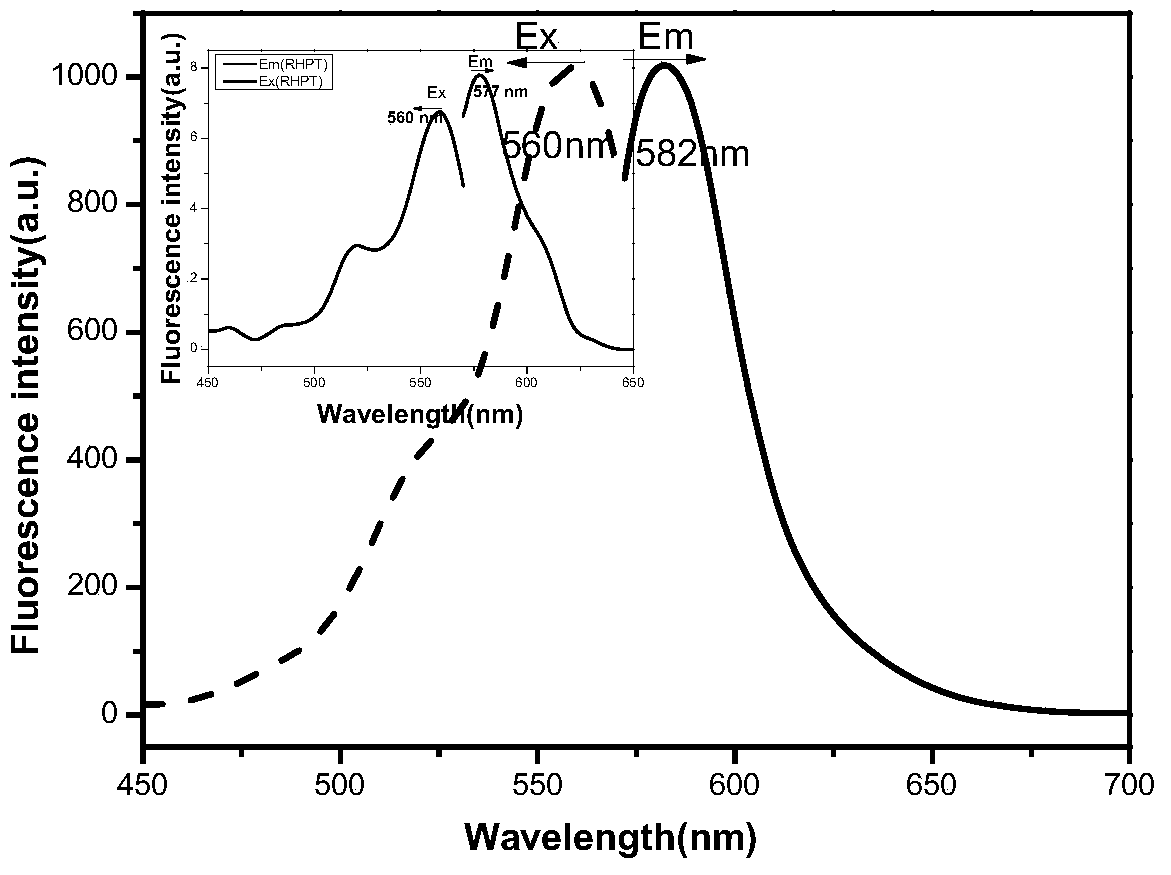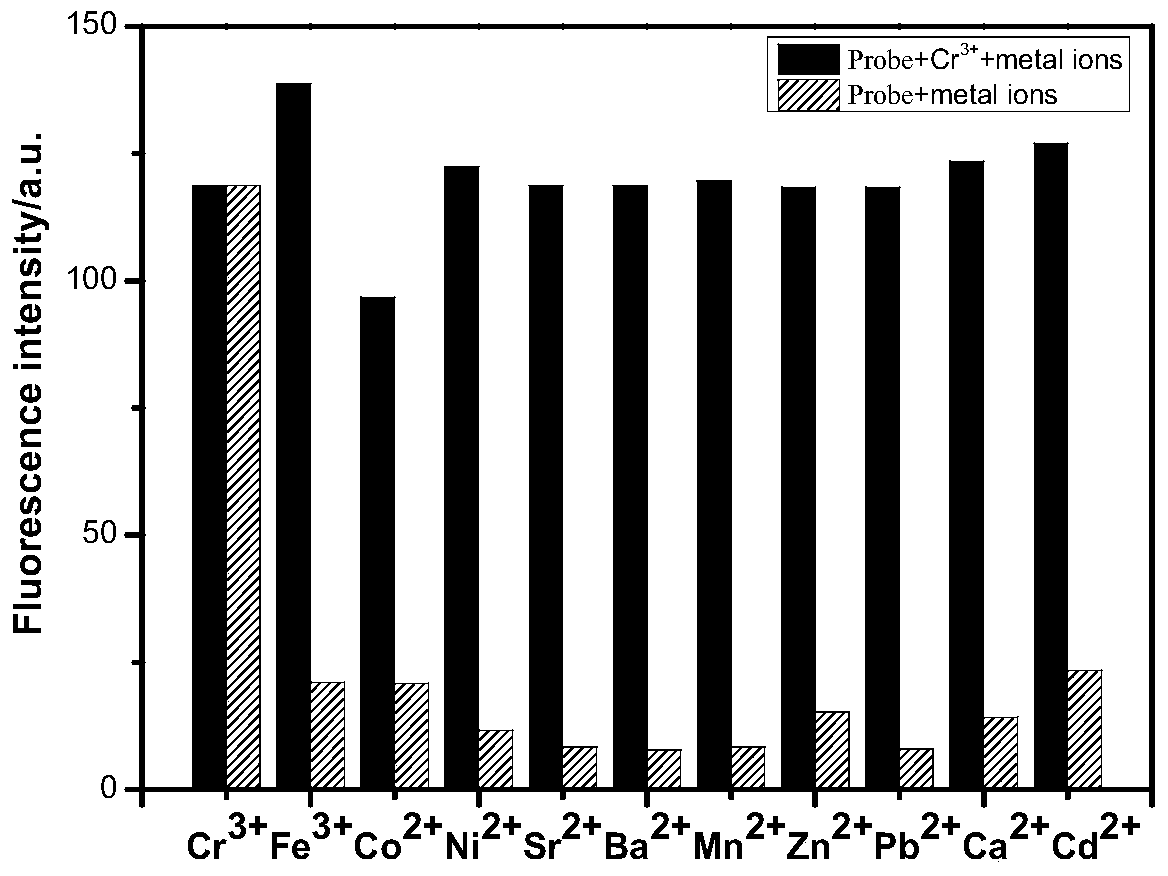A method for detecting trivalent chromium ions using rhodamine-based fluorescent probes
A technology of fluorescent probe and trivalent chromium, which is applied in the field of fluorescent probe material detection, can solve problems affecting the accuracy and sensitivity of inspection, difficulty in grasping the volume of boiled water samples, unfavorable real-time monitoring, etc. The effect of low line and good use effect
- Summary
- Abstract
- Description
- Claims
- Application Information
AI Technical Summary
Problems solved by technology
Method used
Image
Examples
Embodiment 1
[0042] (1) Dissolve rhodamine-based fluorescent probes in acetonitrile solvent to prepare a 10 μM fluorescent probe solution, dissolve chromium nitrate in acetonitrile solvent to prepare a 10 μM trivalent chromium ion solution, add 1 mL of 10 μM fluorescent probe solution In 1mL 10μM trivalent chromium ion solution, test the ultraviolet change spectrum of the fluorescent probe solution before and after adding the trivalent chromium ion solution, the results are as follows figure 1 shown.
[0043] (2) Dissolve rhodamine-based fluorescent probes in acetonitrile solvent to prepare a 10 μM fluorescent probe solution, dissolve chromium nitrate in acetonitrile solvent to prepare a 10 μM trivalent chromium ion solution, add 1 mL of 10 μM fluorescent probe solution In 1mL 10μM trivalent chromium ion solution, test the fluorescence excitation and emission change patterns of the fluorescent probe solution before and after adding the trivalent chromium ion solution, the results are as fo...
Embodiment 2
[0053] A method for detecting trivalent chromium ions by using a rhodamine fluorescent probe, the specific steps are:
[0054] Step 1: Prepare rhodamine-based fluorescent probe solution: weigh a certain molar amount of rhodamine-based fluorescent probe in acetonitrile solvent to prepare 100mL with a concentration of 1x10 -3 M fluorescent probe solution, then take 1mL of the above concentration to be 1x10 -3 The fluorescent probe solution of M was added to a 10mL dry volumetric flask, then fixed to volume with acetonitrile solvent and shaken to obtain 1x10 -4 M fluorescent probe solution, take 1mL of the above concentration is 1x10 -4 The fluorescent probe solution of M was added to a 10mL dry volumetric flask, then fixed to volume with acetonitrile solvent and shaken to obtain 1x10 -5 The rhodamine fluorescent probe solution of M;
[0055] Step 2: Preparation of trivalent chromium ion solution: weigh a certain molar amount of trivalent chromium compound chromium nitrate in ac...
Embodiment 3
[0060] A method for detecting trivalent chromium ions by using a rhodamine fluorescent probe, the specific steps are:
[0061] Step 1: Prepare rhodamine-based fluorescent probe solution: the rhodamine-based fluorescent probe refers to the synthesis method of 201510869087.0 "Reactive rhodamine-based fluorescent probe for detecting mercury ions and its preparation and application". The preparation method of the rhodamine-based fluorescent probe solution is as follows: a certain molar amount of rhodamine-based fluorescent probe is configured in an acetonitrile solvent so that the concentration of 100mL is 1×10 -3 M fluorescent probe solution, then take 1mL of the above concentration to be 1x10 -3 The fluorescent probe solution of M was added to a 10mL dry volumetric flask, then fixed to volume with acetonitrile solvent and shaken to obtain 1x10 -4 M fluorescent probe solution, take 1mL of the above concentration is 1x10 -4 The fluorescent probe solution of M was added to a 10mL...
PUM
| Property | Measurement | Unit |
|---|---|---|
| wavelength | aaaaa | aaaaa |
Abstract
Description
Claims
Application Information
 Login to View More
Login to View More - R&D
- Intellectual Property
- Life Sciences
- Materials
- Tech Scout
- Unparalleled Data Quality
- Higher Quality Content
- 60% Fewer Hallucinations
Browse by: Latest US Patents, China's latest patents, Technical Efficacy Thesaurus, Application Domain, Technology Topic, Popular Technical Reports.
© 2025 PatSnap. All rights reserved.Legal|Privacy policy|Modern Slavery Act Transparency Statement|Sitemap|About US| Contact US: help@patsnap.com



